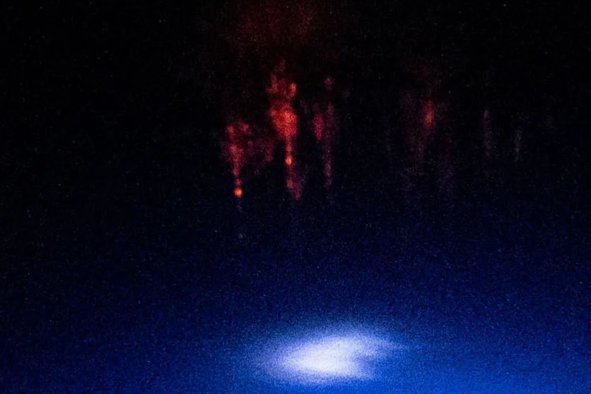Scientists have identified a new species of extinct crocodile kin that reveals they unexpectedly ruled the coasts of the Triassic period.
The groundbreaking discovery of the Benggwigwishingasuchus eremicarminis reveals the presence of waterside crocodile-like creatures around the globe during the Middle Triassic.
Broadly known as pseudosuchian archosaurs—four-legged, carnivorous beings with an armadillo-like coating—these creatures are now known to have existed coastally between 247.2 million and 237 million years ago.
Researchers from the Natural History Museum of Los Angeles County (NHMLAC) made the fossil discovery in Nevada, an unlikely location given its status as one of the driest states in the U.S. Samples were taken in Favret Canyon, west slope of Augusta Mountain, toward the north of the state.
Though Nevada's topography is characterized today by sandy deserts and mountainous ranges, prehistoric Nevada once sat beneath the eastern Panthalassan Ocean, a vast expanse that surrounded Pangaea when it was a supercontinent.
The discovery affirms that their sea-adjacent dominance was in fact worldwide. Evidence of the species' existence has previously been unearthed in fossil beds from the shores of the ancient Tethys Ocean, predecessor to the modern Indian Ocean. The findings are the first indication of pseudosuchian archosaurs' presence beside water in the Western Hemisphere.
"Our first reaction was: What the hell is this?" co-author Dr. Nicole Klein, of the University of Bonn, Germany, said in a statement.
"We were expecting to find things like marine reptiles. We couldn't understand how a terrestrial animal could end up so far out in the sea among the ichthyosaurs and ammonites. It wasn't until seeing the nearly completely prepared specimen in person that I was convinced it really was a terrestrial animal."
In uncovering this, researchers find themselves in a world of new unknowns regarding how the species adapted to thrive shoreside globally, and how the adaptations compare to other pseudosuchians of the era.
Following this development in understanding the global distribution of pseudosuchian archosaurs, signs point to there being a greater assortment of species co-existing in unexpected habitats.
"A growing number of recent discoveries of Middle Triassic pseudosuchians are hinting that an underappreciated amount of morphological and ecological diversity and experimentation was happening early in the group's history," Dr. Nate Smith, lead author of the paper and the Gretchen Augustyn director and curator of the Dinosaur Institute at the NHMLAC, said in a statement.
"While a lot of the public's fascination with the Triassic focuses on the origin of dinosaurs, it's really the pseudosuchians that were doing interesting things at the beginning of the Mesozoic."
At 13 syllables, Benggwigwishingasuchus eremicarminis is quite the mouthful. "Benggwi-Gwishinga"— a word that means "catching fish" in Shoshone, honors the Fallon Paiute Shoshone Tribe, the original inhabitants of the Augusta mountains. Combined with the Greek word for Sobek, the Egyptian crocodile-headed god, it creates the new genus, Benggwigwishingasuchuswas. The specific epithet, eremicarminis, translates to "desert song," paying tribute to two NHMLAC supporters who are passionate about paleontology and opera. By combining each element, the full name should roughly translate to "Fisherman Croc's Desert Song."
The full study was produced by the Natural History Museum of Los Angeles County and published in Biology Letters.
Do you have an animal or nature story to share with Newsweek? Do you have a question about paleontology? Let us know via science@newsweek.com.
Disclaimer: The copyright of this article belongs to the original author. Reposting this article is solely for the purpose of information dissemination and does not constitute any investment advice. If there is any infringement, please contact us immediately. We will make corrections or deletions as necessary. Thank you.



